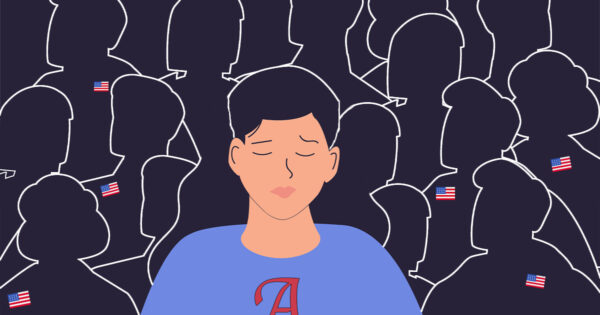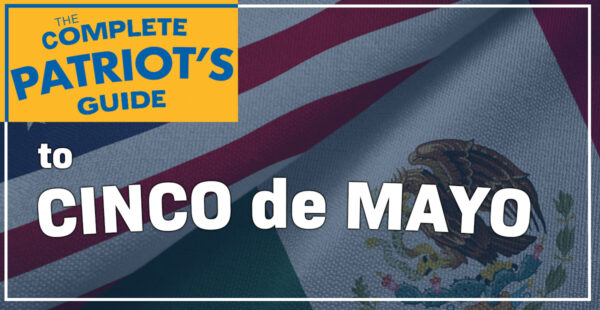By April 7, I had already socially distanced in the name of public health for 23 days. The panic attacks brought on by decision fatigue (“What do I do without a commute? Should I even shower? How do I fax without a fax machine? What are the moral and ethical implications of ordering Runza at a time like this?”) were now behind me.
By this point, I had a new, steady routine of waking early, putting on my best yoga pants and reporting to the home office that was once my dining room. After eight hours of chat threads, Zoom meetings, and coronavirus meme sharing, I would log off, serve myself a glass of wine, and converse with friends and family on the phone for at least an hour.
 Though I was no doubt connecting daily with others despite the distancing, an inexplicable emptiness nevertheless rattled inside me. That Tuesday, I let myself fully feel that emptiness. I remember stretching out on my couch while the sun lowered through purple clouds and weeping softly, my pets wondering what was wrong.
Though I was no doubt connecting daily with others despite the distancing, an inexplicable emptiness nevertheless rattled inside me. That Tuesday, I let myself fully feel that emptiness. I remember stretching out on my couch while the sun lowered through purple clouds and weeping softly, my pets wondering what was wrong.
It was in that morose state that I reached for my phone and scrolled through Facebook. Let’s howl at the moon at 8, a friend jokingly suggested. People howling in Denver, someone posted.
I looked at the time. It was almost 8. When the hour arrived, I stepped outside and faced the cramped mess of backyards and parking lots that my building overlooks. Surely someone will be into this, I thought.
“AWWOOOOOOOOO!” I cried, then waited. No response.
“AWOOOOOOOOO!” I cried a few more times. Still nothing. My dog looked around as though he didn’t know me. Five minutes passed before I heard a howl to the south and east of me. After a couple of nights of trying, I gave up. I suspect most Nebraskans are generally too inhibited to howl en masse, and it was not filling the emptiness inside me anyway.
Although I have since abandoned howling, one daily practice I have kept up throughout this period of social distancing is the afternoon stroll. Every day around 5, I change out of my work yoga pants into my workout yoga pants (the former have more give for extended sitting at my desk while the latter have pockets for keys and dog-poop bags) and hit the residential streets of Midtown Omaha.
What I encounter each time is nothing less than a real-life newsfeed where the stories are hyper-tailored to me. Some recent headlines include “Top 10 dads who finally shed remaining self-consciousness about strollers,” “City tears up sidewalk; reason unclear” and “Bradford pear trees: Why.”
I like these strolls. They are distinct from the other main modes of experiencing one’s neighborhood. Yes, porches are great and I spend considerable time on my back porch, but on the porch, I am just a spectator. The world literally passes by me; its scope limited to how far I can see. Parks – when they are open – are OK, too, but they are difficult to occupy comfortably. Just as an acting student struggles to find something to busy their hands or else look weird onstage, I struggle to visit a park and simply be – I need to be picnicking or watching ducks or reading. Anything less – playing with blades of grass and twigs, for instance – seems almost too frivolous for a trip to the park. I could stay in my backyard to do that.
Strolls, meanwhile, offer so much more than porches and parks. Strolls – particularly in the age of COVID-19, where it feels as though half my neighborhood pours into the streets at 5 – can be delightfully confrontational. When I am not lecturing new cyclists to announce themselves better or apologizing to skaters for my dog’s apparent hatred of small wheels, I am in a nonstop game of pedestrian chicken against people walking toward me in the opposite direction. Though I almost always yield to the other pedestrian by stepping aside to ensure ample distance between us as they pass, I get a nod of appreciation only half the time. Now that I have no traffic to negotiate or outfits to lay out in the morning, perceived slights like these are what I dwell on now.
What kills me is that every day I encounter the same faces. For instance, there is the young man with the Creighton gear who walks my route but in the opposite direction. And the red-haired woman with her similarly colored spaniel. Also, the man and woman who look so alike yet walk so closely I can never tell whether they are married or maybe siblings from a country with less personal space.
So every day, I play chicken with the Creighton dude, and every day I tug my dog away from the spaniel. Amid all this is a steady stream of bicycles zipping past us (usually without bells) and the ever-present threat of errant golf balls from the nearby Field Club, which, confoundingly, remains open.
This all probably sounds like complaining, but I sense these daily annoyances are fulfilling a vacuum previously satisfied in pre-pandemic times through the quotidian ennui of waiting to use the copier, staring upward in elevators to avoid small talk, and answering whether I want a receipt. Perhaps, this entire time, they were a secret ingredient to living I did not realize I needed until forced to subsist on Solitude, Zoom Meetings, and Long Deep Phone Calls alone.
I must not be alone in this realization and this craving. Otherwise, I would not be the only one taking to the streets at 5, hungry like a wolf, aching to be inconvenienced by other wolves.
“Awooooo,” I tell myself.
![]()
Astrid Munn is the Child and Family Managing Attorney at Immigrant Legal Center in Omaha. A native of Scottsbluff, Astrid began her career as a journalist before earning her law degree from Washington University in St. Louis. She previously practiced immigration law in the D.C./Baltimore area and personal injury law in Western Nebraska. For more Civic Nebraska Writers Group columns, click here.




